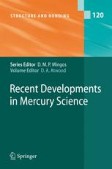Search
Search Results
-
Cytological, Physiological and Biochemical Aspectsof Somatic Embryo Formation in Flax
The cytological, physiological and some biochemical aspects of somatic embryo formation in flax are discussed. From the review it is obvious that...
-
Magnetic Fields in Galaxies
Magnetic fields are a major agent in the interstellar medium. They contribute significantly to the total pressure which balances the gas disk against...
-
Magnetic Fields in Galaxy Systems, Clusters and Beyond
The discovery of significant magnetic fields beyond our Milky Way was unwittingly made in the early 1950’s when new “discrete” cosmic radio sources...
-
Stellar Magnetic Fields
Stellar magnetic fields are directly detected or inferred across the whole Hertzsprung--Russell Diagram. Attention in this chapter is concentrated on...
-
Chromatin Modifications in DNA Repair
A requirement of nuclear processes that use DNA as a substrate is the manipulation of chromatin in which the DNA is packaged. Chromatin...
-
Structural Aspects of Layered Double Hydroxides
Layered double hydroxides (LDHs) have been known for a considerable time and have been widely studied. The basic features of their structure,...
-
n-Body Decomposition Approach to the Calculation of Interaction Energies of Water Clusters
A new methodology is proposed in which large basis set MP2-level calculations can be extended to water clusters with as many as 50 monomers. The...
-
Multiporphyrin ArraysAssembled Through Hydrogen Bonding
Although relatively weak in isolation, composite H-bonds can be used as an advantage for the assembly of relatively robust and well-defined arrays...
-
Axial Coordination to Metalloporphyrins Leading to Multinuclear Assemblies
The use of axial coordination to metalloporphyrins is discussed on the basis of constructing multinuclear complexes. Starting with single...
-
Poly(mercaptoimidazolyl)borate Complexes of Cadmium and Mercury
The coordination chemistry of bis- and tris(mercaptoimidazolyl)borate ligands with both main-group and transition metals is rapidly expanding....
-
Quality control of proteins in the mitochondrion
The quality control of proteins within mitochondria is ensured by conserved and ubiquitous ATP-dependent molecular chaperones and proteases, present...
-
The Hsp60 chaperonins from prokaryotes and eukaryotes
The Hsp60 molecular chaperones (the chaperonins) are essential proteins throughout biology. They can be separated into two evolutionary classes: the...
-
Schizosaccharomyces pombe comparative genomics; from sequence to systems
The fission yeast Schizosaccharomyces pombe is becoming increasingly important as a model for the characterization and study of many globally...
-
Magnetic Fields in Diffuse HI and Molecular Clouds
The diffuse interstellar HI is the matrix within which many molecular clouds reside and the medium that soaks up the energy injected by sources such...
-
Magnetic Fields in the Early Universe
A substantial magnetic field could conceivably have been generated in the ultra-early Universe. However, the relevant physics at those eras is very...
-
The Retinoblastoma Gene Family in Cell Cycle Regulation and Suppression of Tumorigenesis
Since its discovery in 1986, as the first tumor suppressor gene, the retinoblastoma gene (Rb) has been extensively studied. Numerous biochemical and...
-
Senescence and Cell Cycle Control
In response to various stresses, such as telomere shortening during continuous proliferation, oxidative stress, DNA damage and aberrant oncogene...
-
Mercury Removal from Water
Mercury pollution in water is a serious threat to natural ecosystems. Various methods and technologies are in use to remove mercury from the...
-
Telomeres in fungi
Telomeres are the functional elements concluding and defining each linear chromosome in eukaryotes. They play an essential role in protecting genetic...
-
Systems Biology: necessary developments and trends
At the end of this definition of Systems Biology through exampling, we discuss ambitions, goals, and challenges relating to this new discipline. We...
